Sawing driftwood for my review of the Silky Bigboy in the February issue struck a chord that has resonated deeply through most of my life. My father used to take me to the beach near our home in Edmonds, Washington, to gather red cedar driftwood for a fence that would eventually surround our 1/3-acre lot. In those days, tugs towing long rafts of logs up and down Puget Sound were common, and logs often escaped and washed ashore. Dad and I would load the ’54 Ford Ranch Wagon with a crosscut saw, a bow saw, a maul, and wedges and head to a beach where there was no shortage of stray red cedar logs. I was too young to do much work other than fetch tools; Dad cut logs to length and split posts, rails, and pickets. When we had enough to fill the car, we loaded up and headed home; the smell of red cedar filled the car and seeped into our clothes.
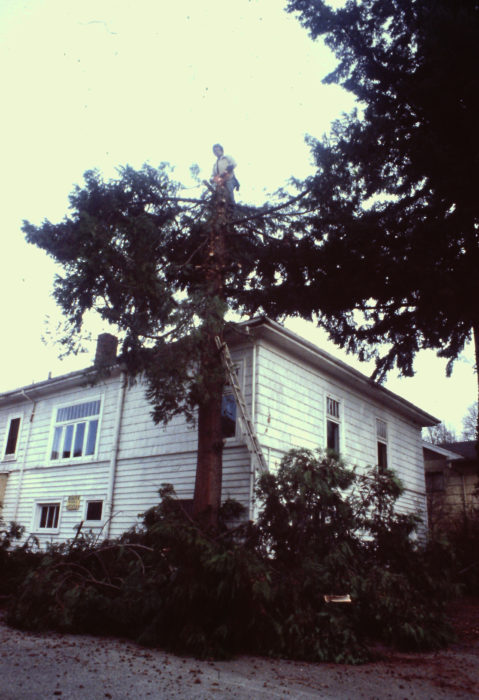
On a few occasions I’ve harvested trees that had to come down. This western red cedar was threatening to crack the foundation a friend’s home in Seattle. Some of the wood from this tree became floorboards for a Gokstad faering.
When I started building kayaks in the late ’70s, the beach was my best source of the wood I needed: spruce for gunwales, chines, and keelsons, and yellow cedar for deck beams and steam-bent frames. The yellow cedar was much better for bending than any kiln-dried wood from the lumberyard.

When the wood from a salvaged log was going to be used for steam-bent projects, I split the the log to assure the grain ran parallel with the faces of the pieces I needed.
In the ’80s, tugs towing rafts of logs were becoming less common and the pickings weren’t so good, mostly fir and hemlock. I kept an eye out for new logs on the beach that I frequented. They’d usually appear after a storm or a spring tide. One 16′ red cedar log, half a log really, about 4′ across where it had split, washed ashore on a section of beach that was usually swept clean of driftwood. If I were going to salvage any of the cedar I had to get to work. I walked home, put my kayak on a cart, and loaded it with dad’s wedges and splitting maul.
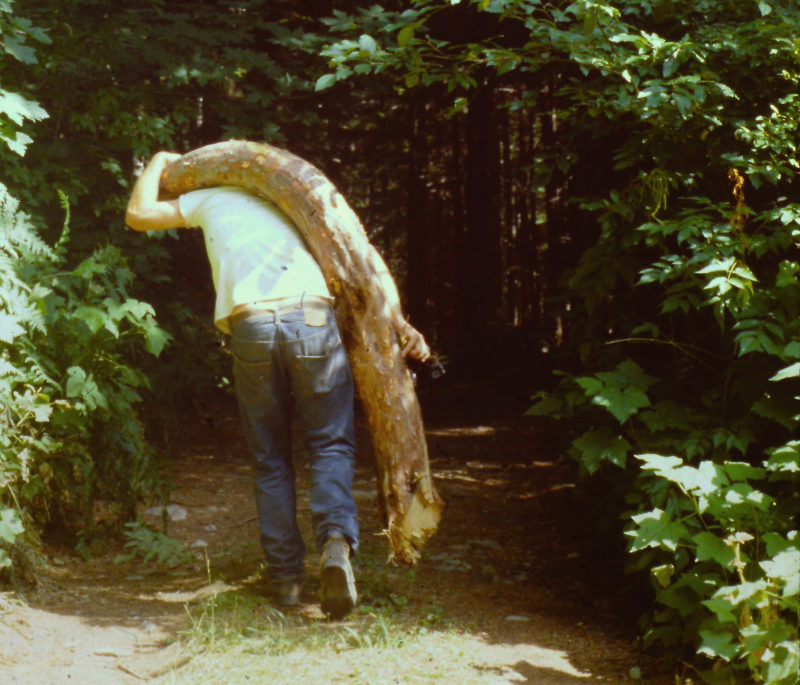
The mountain slopes produce curved trunks in areas prone to avalanches. This Alaskan yellow cedar trunk became curved deck beams for replicas of Aleut and Greenland kayaks.
I paddled to the log, and in a few hours I’d split off several slabs about 8″ thick and 2′ wide from heart to bark. I floated the slabs out one at a time and towed each one along the 1/2 mile of beach to get to the path that led to the street I’d walk to get home. To get a slab up the railroad embankment and over the two sets of tracks I made a rope harness and crawled on all fours like a sled dog, using the rails to pull and push myself forward, always listening for the ringing in the rails, my early warning that a train was on its way.
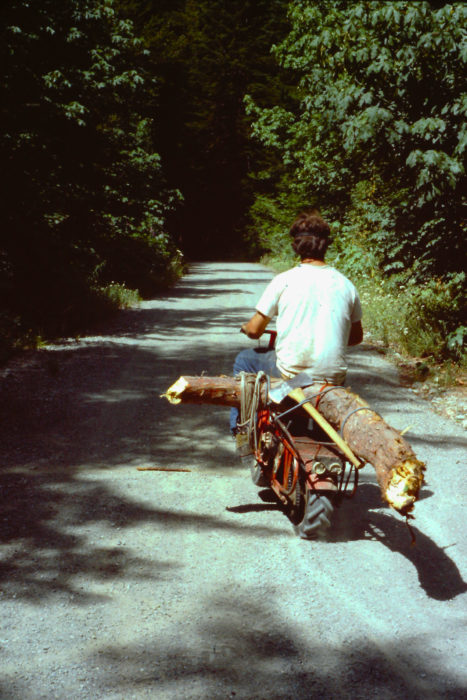
My old Tote Goat trail scooter helped transport downed crook stock.
I got four slabs home before the tide took the rest of the log. At the time I didn’t know what I was going to do with the cedar, so I stacked it in the back yard to season. I later made a hammer dulcimer and used a thin piece of that cedar for the soundboard; then I sawed the rest into 4′ lengths, hauled them to my cabin in the woods, and made planks for a cold-molded sneakbox.
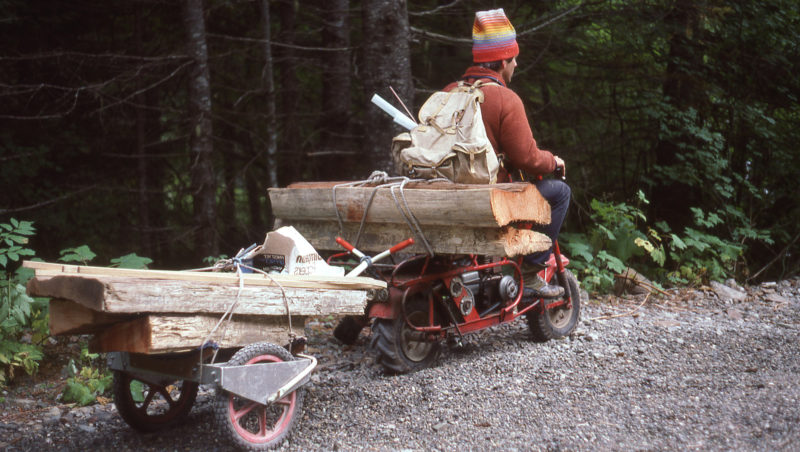
The slabs of red cedar that I’d salvage from the beach made the last leg of the journey to my mountain shop with the help of the Tote Goat.
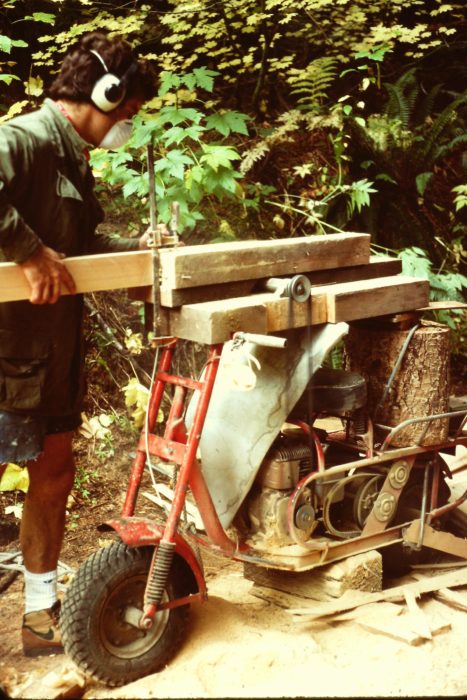
The Tote Goat’s motor powered the jury-rigged tablesaw I used to resaw red cedar for planking. A cord wrapped around the throttle and connected to a stick with one end resting on the ground let me control the engine rpms with my foot.
My cabin and shop, built entirely of salvaged lumber, were on the north bank of the Sauk River near the site of Monte Cristo, a long-abandoned mining settlement. During the spring and fall water, the river ran high and undercut banks, dropping trees; avalanches during the winter brought more trees down, so there were dead trees everywhere. High up on the slopes that surrounded my cabin, many yellow cedars that were regularly pushed over by avalanches survived and grew with J-shaped trunks. Those that eventually were uprooted by avalanches provided crooks perfect for deckbeams in traditional skin-on-frame kayaks that I built in my shop. I found one yellow cedar log that had been buried in a landslide for who knows how long, eventually uncovered by a flooding creek. Beneath the rotted sapwood wood was beautiful, bright yellow, deliciously redolent, tight-grained wood.
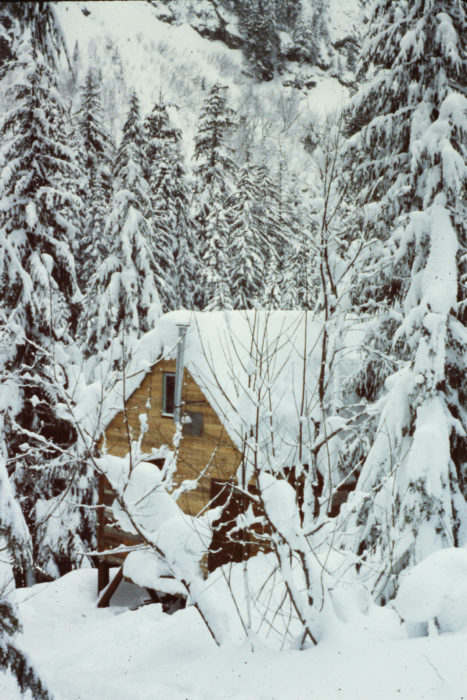
During the winter there were few interruptions to working on boats. Visitors had to ski or snowmobile along 14 miles of unplowed road to get to my shop.
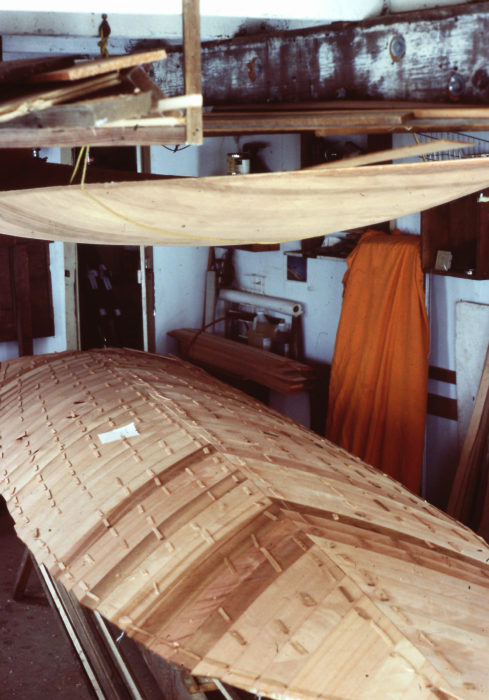
The hull and deck of the sneakbox were made entirely of red cedar from the log I’d salvaged on the beach. When was gluing layers together I’d get the wood stove going and heat the shop up to around 90 degrees. The well-insulated shop would hold the heat for most of the night and the epoxy would be cured by morning.
I cut the red cedar slabs with a chainsaw mill to rough-sawn 4x4s. To resaw those into 1/8″ planks for cold-molding, I mounted an arbor with a 12″ carbide blade on a 4×12, and fit the beam-made-table-saw to the handlebars and rack of my tote-goat trail bike. With the 5-hp Briggs and Stratton motor powering the cobbled-together table saw, I cut hundreds of planks. It took a couple of months to build the sneakbox, but by mid-winter, with the valley draped in snow, the cedar I’d hauled off the beach had become a boat.
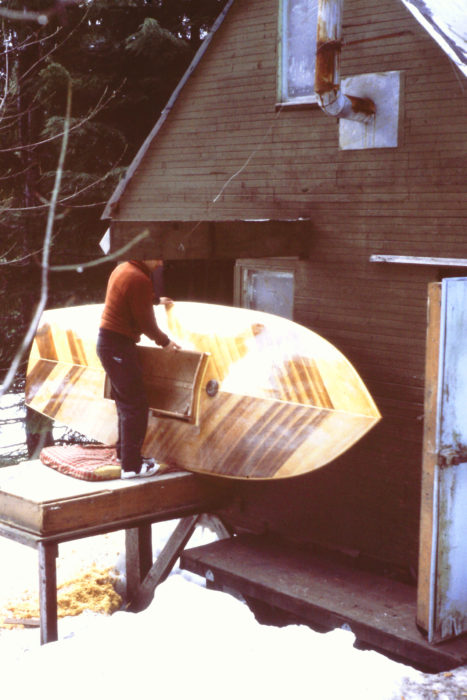
In the middle of my last winter in Monte Cristo, I moved to a cabin on Lopez Island in Washington State’s San Juan Islands. When the sneakbox was ready to leave my mountain shop, I made a sled for it out of old skis and towed it to the road behind an aging snowmobile. Halfway down the 14 miles of unplowed road, the muffler fell off. Fortunately, I had hearing protectors with me and the jet of blue flame shooting across my right shin didn’t set my pants on fire.
I don’t gather as much driftwood and windfall as I used to, but I still keep an eye out for good wood. I occasionally find chunks of old-growth yellow cedar driftwood on the beaches, some with rings nearly invisible to the naked eye—100 per inch—that is perfect for model making. One split from a yellow cedar log that I towed a mile behind my kayak had more than 500 rings; it was from a tree that was standing long before Columbus set sail. Winter storms in the Seattle area tend to bring down lots of honey locust branches, and I gather that for making cleats. I’ll admit that I like getting wood for free, but that’s neither the only nor the greatest reward. Windfalls and driftwood are not only often much better wood than anything I could buy, but they also come with a story and a connection to times and places in my life. And to have the wood delivered to me by the power of wind and water makes it all the more appropriate for building boats.![]()
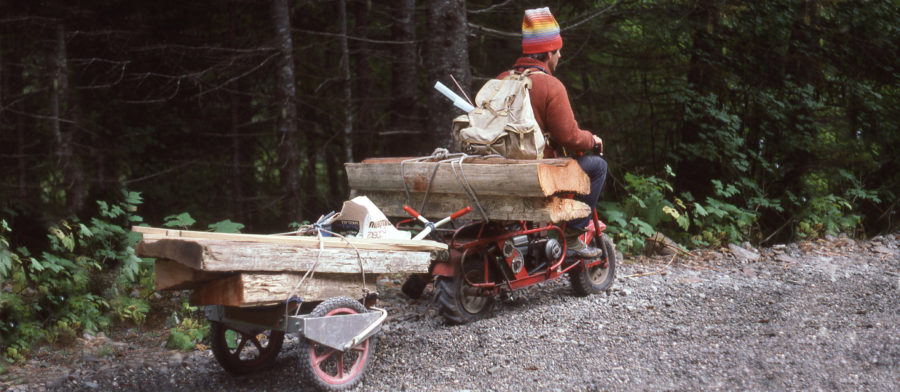
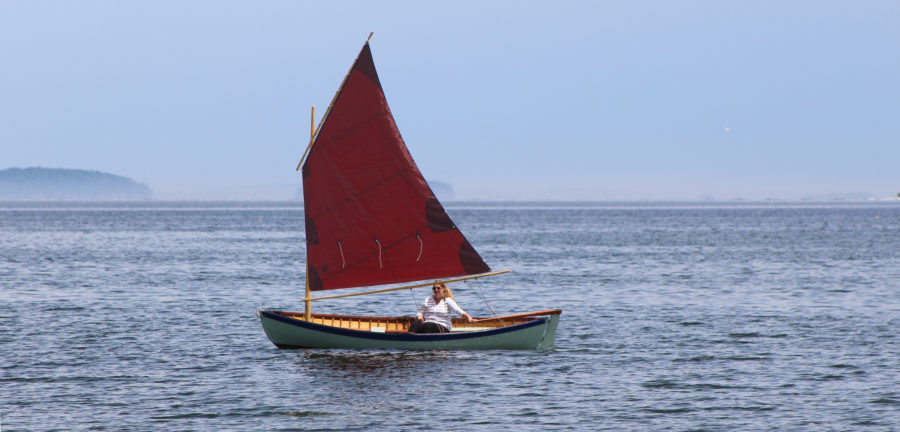
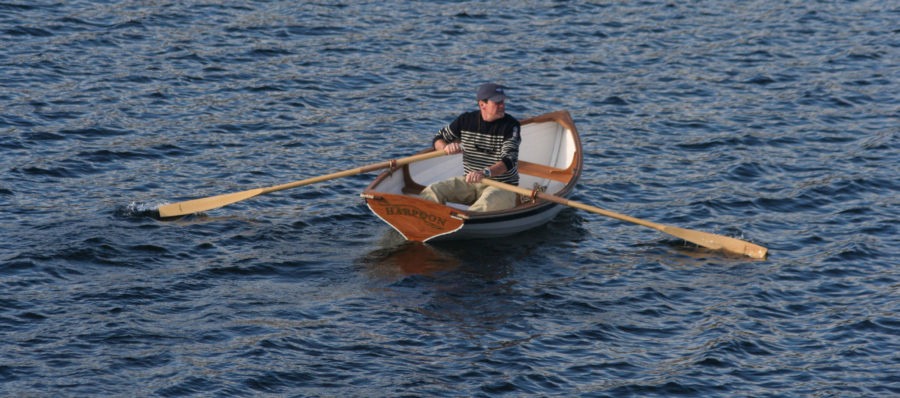
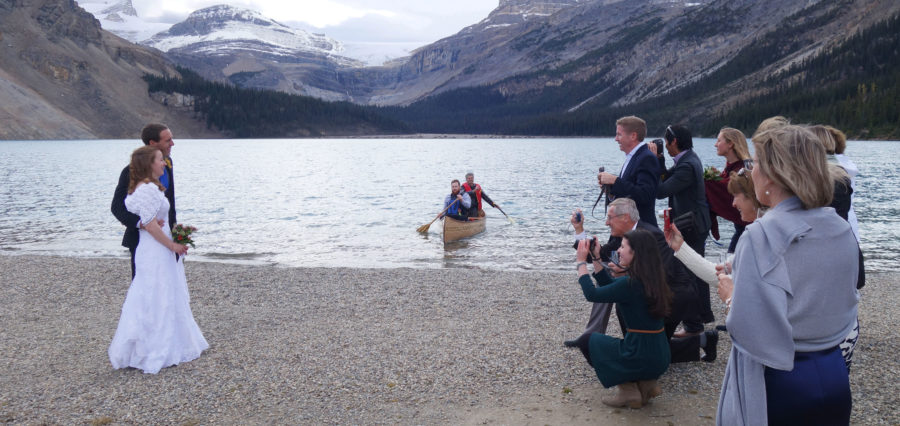
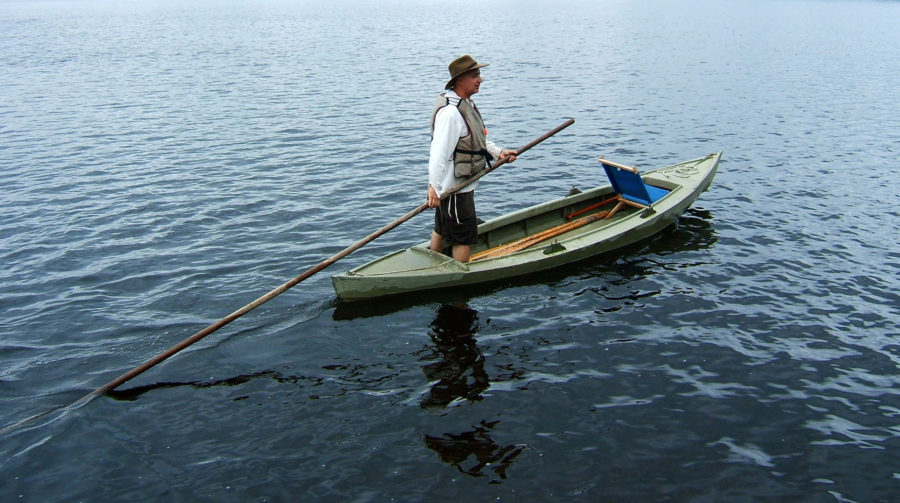
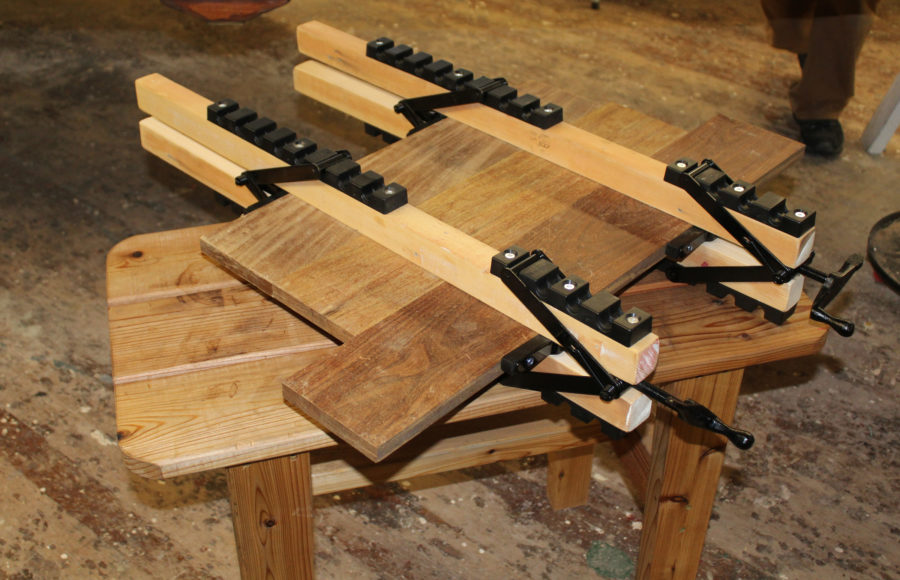
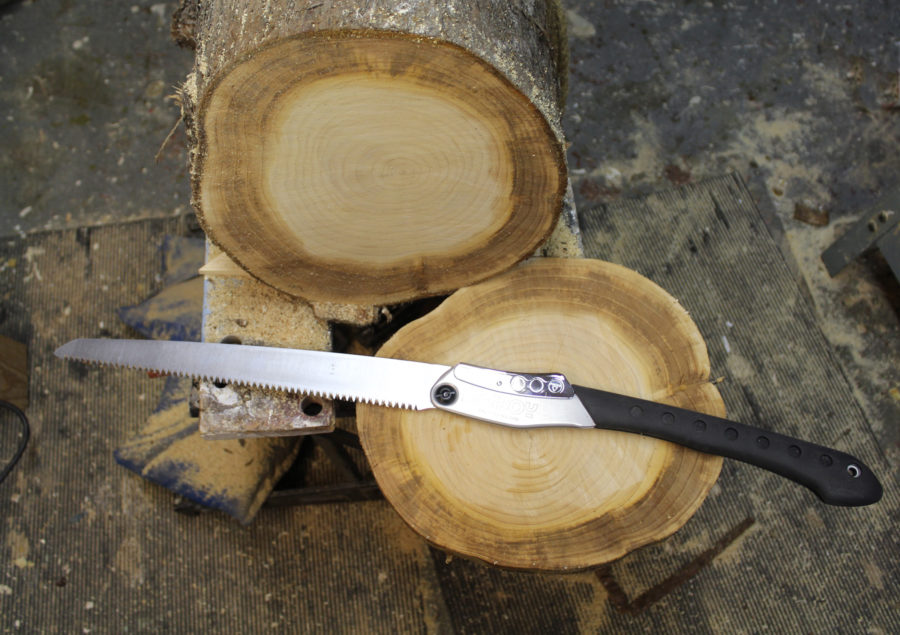
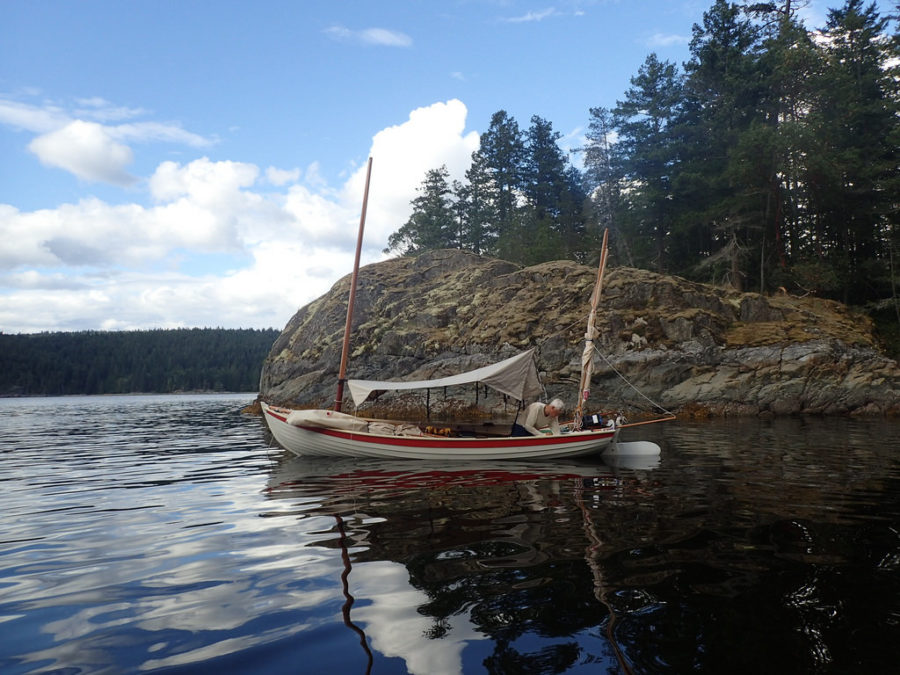
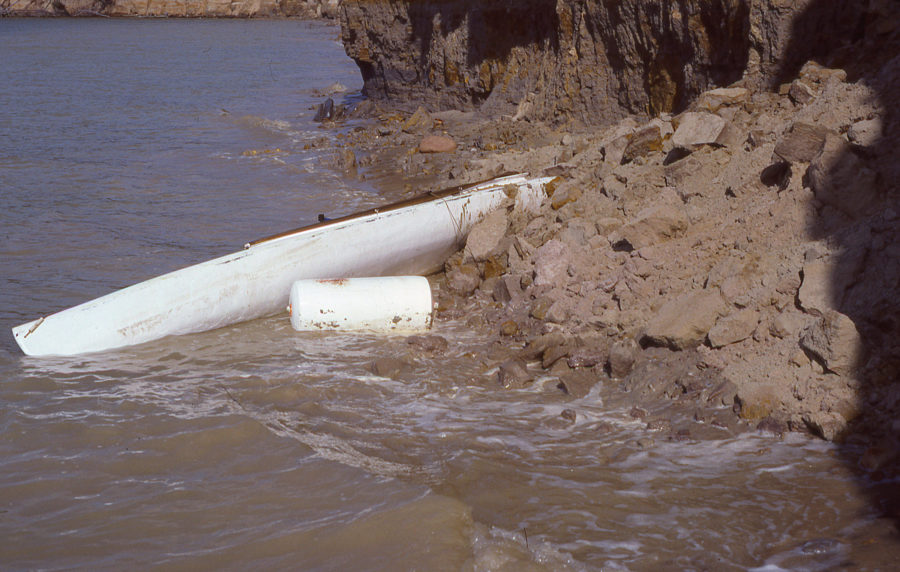
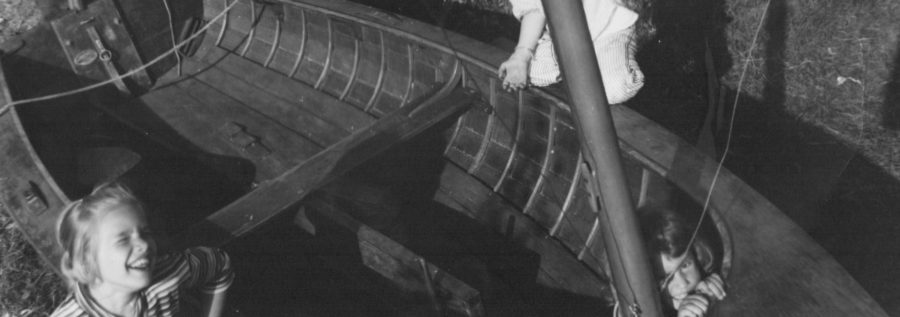
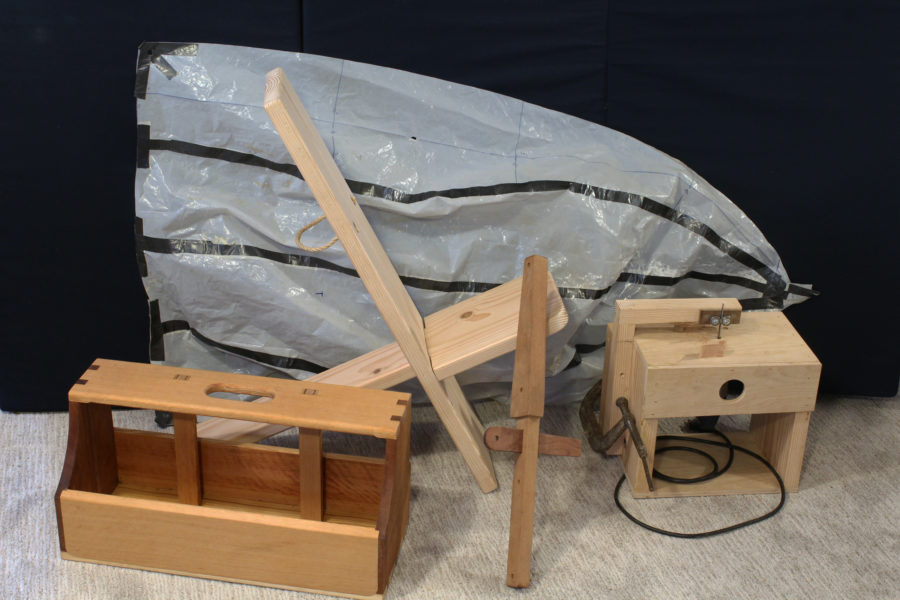
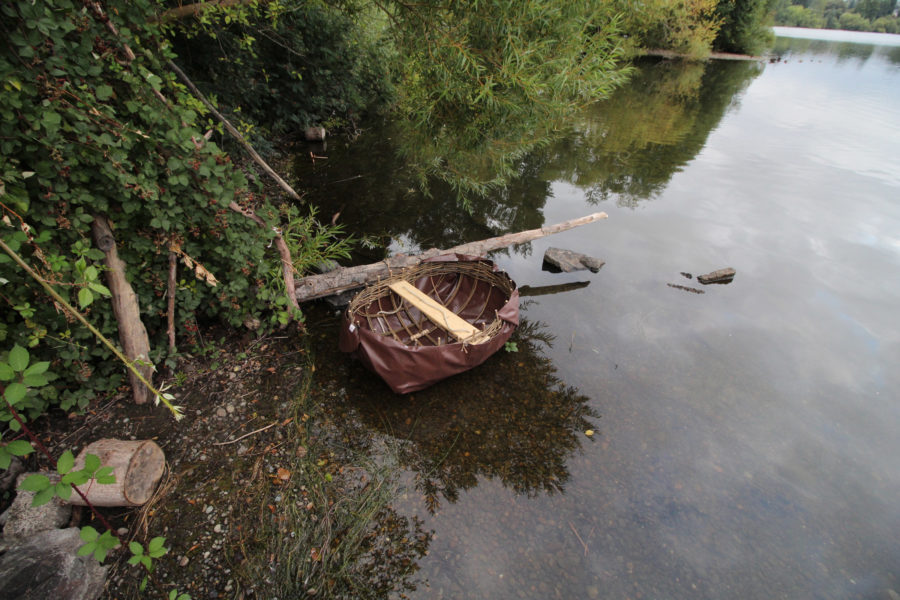
Awesome. The wood, the redneck motorbike table saw, the cabin, etc, etc.
Great story. I really enjoyed reading it.
Great to see a Mountain Goat still going! They are collectors items now. Excellent way to run a saw too. I really enjoyed your article.